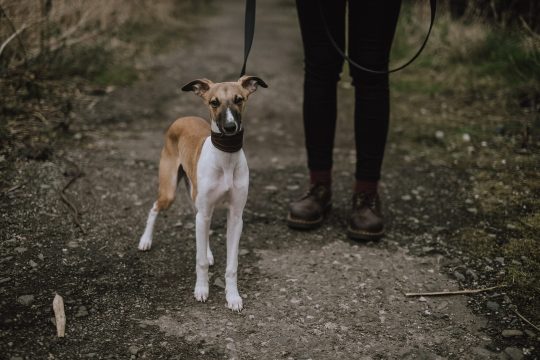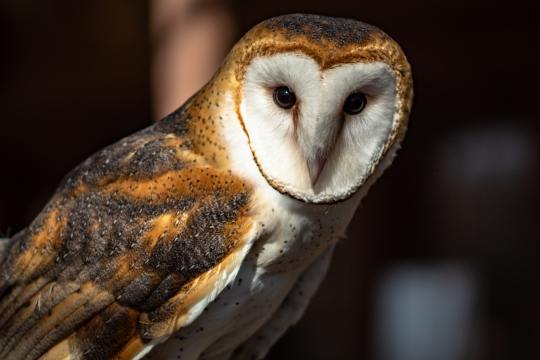Text
TOP 10 THINGS TO KNOW ABOUT ELEPHANTS, ENTERTAINING FACTS

Some amazing and entertaining facts about these gray-robed giants
- Rituals: Elephants use their tusks - as their names suggest - for self-defense, but also for digging for salt and roots, debarking trees, and cutting paths in the brush. If you look closely, you will see that one tusk is used more because the elephant always prefers one over the other. Because among the elephants there are also right-handers and left-handers.
- Lucky charms: Whether it's weddings, final exams, drawing up contracts, or enrolling children in school: Hindus pray and make offerings to the elephant-headed god Ganesha, to attract luck and success. In some Asian countries, albino elephants are considered sacred.
- Gourmets: they like to eat grass, spices, tree leaves, fruits, bark, marrow, and vines.
- Trunk: We couldn't breathe underwater using a snorkel the length of an elephant's trunk, because of the high pressure. Elephants, on the other hand, have such stable lungs that they can inhale air from the surface of the water with their trunks up to 1.50 m long. This physical characteristic allows them to take long walks under the surface of the water.
- Landscape gardeners: Elephants are frequent travelers, carrying the seeds of plants they have eaten with them and expelling them in a wide radius at the rdone. Thus, they participate in the creation of new flora. Moreover, their manure is so rich in nutrients that many other species can feed on it.
- Animal Guardians: By digging for water with their big paws, elephants also discover water which is essential for the survival of other animals. An elephant's footprint sunk into the ground and filled with water thus leaving a "miniature biotope" behind.
- Thick Skin: Although elephant skin is very thick on many parts of the body, it is still very sensitive. After bathing, elephants use their trunks to blow sand and mud onto their wet skin to provide natural protection against sunburn and insects.
- Sentient Beings: Elephants can communicate and maintain contact with their peers over long distances by picking up seismic communication signals through their feet.
- Close-knit family: their herds (composed of several groups) are sometimes made up of more than 100 congeners in Africa and about 50 to 70 in Asia. They are led by an experienced female elephant, often particularly large and strong. In the elephant herd, we take care of each other, and social cohesion is extremely important. When male elephants become independent (for male Asian elephants around 10-15 years old and for male African ones around 8-19 years old), they leave the herd and form male roommates. Nevertheless, they continue to see their family members and their contacts remain friendly.
see also: Barn Owls Facts, Everything You Need Know About Barn Owls
- Huge memory: Elephants have such developed brains that they experience a variety of emotions, similar to ours. They are extremely sociable and feel compassion, comfort each other and even mourn their dead. They are also rightly known for their good....
Read the full article
#allaboutelephants#animals#animalsdocumentary#animalsfacts#elephant#elephant(characterspecies)#elephantfacts#elephantfactsvideo#elephantlifecycle#elephants#entertainment#interestingfactsaboutelephants#mammals#mostamazingtop10#top10#top10amazinganimalfacts#top10animalfacts#top10factsintelugu#top10list#topbest#toprate#top5
0 notes
Text
What you Absolutely Need to Know Before Adopting a Dog

There's something about the little face of a puppy... irresistible. It's so cute that it awakens a completely spontaneous and emotional side in us. Even if it means completely putting reason aside.
But once the cute moment is over, bringing a pet home is a huge responsibility. And despite the fact that all the sources say so, few people fully realize it until it is “too” late. Here's what you need to understand most seriously before welcoming a new member of the four-legged family.
What You Need To Know Before Adopting a Dog

Photo by Tran Mau Tri Tam ✪ on Unsplash
Dogs versus Cats
Without entering into the debate on the superiority of one or the other (I have a copy of both specimens at home and I like them just as much), it is certain that the responsibility of one and the other is VERY different.
Cats are much more independent, potty trained almost instantly can be left alone for long periods of time, etc.
Dogs, especially if you adopt them at a young age, don't do any of that. They require a lot more time, patience, and energy, period.
So if what you're looking for most in an animal is “a minimum of trouble,” it's pretty clear which of the two you should choose!
The time spent at home
Unlike cats who won't take too much offense to your long work hours or active social life, dogs are very dependent beings. It will be imperative to plan to be at home at regular times and to have time to devote to them. EACH DAY. GOOD WEATHER, BAD WEATHER.
Although many dogs do, no pooch really benefits from spending 45 or more hours a week alone! And this is especially when they are young and in training, when their bladder does not allow them to hold back for 8, 9, or 10 hours of time.
If you can't, say, come home during the day to go out or walk the dog, there are services that can do that for you. As well as dog daycares, for the most sociable/energetic doggies/who find it difficult to be alone! However, these services are not given and must be added to the overall canine budget (see the corresponding section below).
The walks

Photo by Mitchell Orr on Unsplash
Although this will vary depending on the age, size, breed, and temperament of the dog, it is to be expected that a dog will need approximately 1 HOUR of walking/running/playing outside per day. Even when it's pouring rain. Even when it's -26.
Once clean and adolescent, a dog will need to go out to relieve himself (even without necessarily taking a walk) a minimum of 4 to 6 times a day.
Some dogs of larger and quite energetic breeds can also become good companions for your physical activities, for example jogging or hiking in the mountains. On the other hand, this training cannot usually begin before 1 year and must be done gradually. It is therefore not a “magic formula” to exhaust an overly nervous puppy!
The first year
A dog becomes an adult between 12 and 18 months. Before that, he will require… up to 20 times more time, energy, and difficulty than his compatriot aged 2 and over. Not twice, 20 times! To get through this famous first year, you have to prepare and… expect the worst. For real.
Cleanliness alone will take between several weeks and several months, at the beginning. And those weeks of constantly picking up accidents everywhere, seem particularly long and debilitating.
Potty training also includes the night: unless you have pee pads, you will probably have to take your doggie out at least once … which seems like an eternity. Some puppies are still not potty trained at night at 6 months.
A large part of dog abandonment occurs during this first year of life, especially during the height of adolescence, that is to say between 5 and 9 months. Just like humans, the dog during this period may have completely disconcerting behaviors, which call into question what we thought we knew about him. For example, but not only:
- Having a regression in cleanliness
- Don't listen like before
- Unresponsive to basic commands
- Willfully challenging your authority
- Eating your needs (or those of the cat!)
- Running away when he's never shown that will before
- Begin to bark furiously at passers-by, neighbors, or other dogs
- Chew EVERYTHING in the house (shoes, cushions, cabinets, walls, stair railing, mosquito nets, furniture, carpets, sofas, etc.)
- Make insane impulsive gestures, for example throwing yourself in front of a bus!
Activity level

Photo by Patrick Hendry on Unsplash
One hour of walking does not correspond to the total time of activity, interaction and stimulation that a dog needs. And then it's an average: while some (especially very small and very large) dogs need little activity, some other high-energy breeds need a lot more than that!
This is among others the case of the Huskies, whose breed was developed for the endurance of the specimens as well as their ability to pull heavy sleds at full speed for a whole day! The same goes for sheepdogs, like my border collie Bowie.
This breed has been used for hundreds of years to herd sheep in Scotland over very rough terrain and in extreme weather conditions. So don't expect these frighteningly intuitive and intelligent dogs (a little too much, sometimes) to be able to make an automatic transition like apartment dogs who sleep all day!
It is therefore essential to choose a dog for its level of activity and energy, AND NOT for its physique. This is probably the #1 mistake people make: falling in love with a dog because it physically matches their dream idea.
If you are quite sedentary and very busy, it is obvious that you enjoy the experience more with a dog that is lower in the scale of energy and attention! Again, these are often very small dogs whose breed was specifically developed to keep humans company rather than a "job" at hand, e.g. Chihuahuas, Pugs, Yorkies, etc. But also very large "gentle giant" dogs such as Great Danes, Great Danes, Newfoundlands, etc. fall into this category.
Once the puppy stage is over, many popular breeds like Labradors and Bernese Mountain Dogs also become much quieter and more accommodating!
Training
A dog is like a child; it does not educate itself. He will need to learn – and much sooner than most people think – not only the basic commands but also discipline, how to act in different situations, and socialization (with humans and dogs).
Neglecting this demanding step often only invites problems for later, unfortunately. With rewards, most dogs train well, but it takes time and consistency, every day. Even when we are tired. Even when you have a ton of other things to do. Even when you don't want to.
Dogs are ready for their first "obedience" classes from 8 or 9 weeks, in any case ideally before 16 weeks, before taking "bad folds".
Stolen Freedom
This is another thing that we do not realize right away, but adopting a dog immediately restricts freedom. Every time you leave, you have to make sure you get back in time to get it out. More than 5 to 7 improvised after the office, ever.
And a lot of stress if something doesn't go as planned (unusual traffic jam, breakdown in public transport, etc.)
Having a dog also means taking action every time you go away for a full day or more, even if it's only a day of skiing, for example. Since he cannot stay alone, you also have to find a pension or another place to take him when you go away on a weekend, on a business trip, during vacations, etc.
The costs

Photo by FLOUFFY on Unsplash
Buying a dog is often expensive and sometimes even very expensive for some breeds! It can go for over $1,000. But that's nothing compared to the rest.
- Veterinary fees: vaccines (depending on the weight of the animal but can correspond to several hundred dollars per year), routine examinations (from $60), follow-up appointments, sterilization (can also correspond to several hundred $ depending on the size of the dog, more expensive for a female), flea and tick treatments ($100)
- Registration fees: $100 for a microchip, $30 for a medal depending on the municipality, etc.
- Food: variable according to the weight, age, and specific conditions of the animal but can range between $25 and more than $100 per month. Some large puppies eat up to 8 cups of dry food a day!
- Treats: Indispensable for training, they often cost more than you think! One can easily add $20 per month.
- Toys: Variable according to the type of dog and not always equal from month to month, but to be taken into account all the same.
- Bones and other things to chew: Also essential for many dogs who have an irrepressible need to chew – this can save many pieces of furniture and household items that you hold dear. Another $10-20 per month.
- Basic equipment: A cushion, a good cage, an enclosure, a box or a transport bag, etc. $200 and up.
- Specialized equipment: Depending on your needs… A harness or net for the car, a jogging leash, a backpack for hiking, etc.
- The bags for the needs (and the pee pads): Not to be neglected either.
- Leashes, harnesses, collars, and co: Because they grow, wear them out, break them or eat them: occasional but another expense.
- Grooming: Depending on the size of the dog, between $40 and $90.
- Obedience classes: Variable but at least $30 to $40 per session.
- Occasional help from professionals for specific behavioral problems: A good investment, even if it's around $90 an hour.
- A walk while you're at work: Between $10 and $20.
- One day of daycare: Between $20 and $40 per day.
- One-weekend boarding: Around $250.
- Replacing what the dog broke: A few pairs of shoes is one thing. But a rug, a pouf, and two sofas are very expensive!
And that's for a perfectly healthy dog! Except that most dogs end up developing medical problems during their lifetime.
And that of course means additional costs, whether in specialized food, medication, surgery, following an accident, etc. It is not uncommon for owners to have to spend several thousand dollars at the vet.
see also: The 15 most beautiful cats breed in the world
Pet shops, it's no!
Read the full article
#adoptadog#adoptapitbull#adoptingadog#adoptingadogatashelter#adoptingadogfromashelter#adoptingadogfromasheltertips#adoptingadoghouston#adoptingadogtips#adoptinganewdog#adoptingapuppy#adoptingarescuedog#adoptinganimalsatshelter#adoptingdog#adoptingdogfirstdayhome#adoptingdogs#bringinghomearescuedog#gettingarescuedog#howtoadoptadog#iadoptedadog#rescuingadog
0 notes
Text
The Facts About Lonely Soldier Lapwings

DESCRIPTION
Class: birds
INFORMATION SHEET
Averageweight: 230 to 400g
Way of life: alone, in a couple, or in a group
Food: Insects, earthworms, mollusks
Breeding: All year
sexual maturity: 1 year
Pregnancy: Hatching 28 to 30 days
PARTICULARITY

Photo by Ramlee Ibrahim on Unsplash
Morphological characteristics
Soldier lapwings have almost entirely white underparts, contrasting with the wings and back which are plain olive-brown, and the crown which is black. The face is covered with long yellow wattles which form a characteristic mask. The wings are equipped with a spur at each wrist. This spur is yellow with a black tip.
Geographic distribution
It is endemic to Indonesia, New Guinea, and Australia where it is found in the north, east, and south.
Habitat
Soldier lapwings frequent a wide variety of open habitats. However, they prefer those with short grass, whether natural or cultivated. They are therefore found primarily in pastures, fallow land, airports, and at the edge of many kinds of wet habitats such as temporary reservoirs, water holes, lakes, and lagoons.
They are never very far from the water. Soldier lapwings can also be seen in sheltered coastal areas. They are pretty common in urban areas where they readily occupy parks, playgrounds and roads provided these are provided with grass.
Diet
Soldier lapwings feed mainly on insects, earthworms, and spiders. They also catch mollusks, and crustaceans and they take seeds and leaves.
Social structure
These birds may choose to be solitary, to live in couples, or to congregate in small, loose groups.
When there are eggs or newly hatched chicks in the nest, the Soldier Lapwing will defend the territory with great determination. The adults make a swift lunge at the intruder and may even pretend that one of their wings is damaged in order to distract the potential threat and draw it away from the nest.
There are not many contacts. In most cases, these activities stop as soon as the chicks are able to move around on their own. Instead of protecting the actual nest itself, the parents guard much larger territories around the young.
The Soldier Lapwing is accustomed to the presence of humans and can therefore survive being in close proximity to them when they live in metropolitan environments. On the other hand, he is apprehensive of other people and will not tolerate an approach that is too detailed.
see also: Barn Owls Facts, Everything You Need Know About Barn Owls
Read the full article
#allbirds#amazingbirds#beautifulbirds#birds#factaboutsoldierlapwing#factsaboutlapwingbirds#islapwingbirdsdoexist?#lapwingbirds#lonelysoldierlapwings#lovebirds#maskedlapwings#mostbeautifulbirdsintheworld#soldierlapwings#thebirds
0 notes
Text
Barn Owls Facts, Everything You Need Know About Barn Owls

The owl’s feathers are lighter in color than those of the majority of other owl species. While the top is yellow, the underside is often white, and there are brown dots on the chest. She has a face disc that is white and shaped like a heart, and it is encircled by a brown line... Read More
5 notes
·
View notes